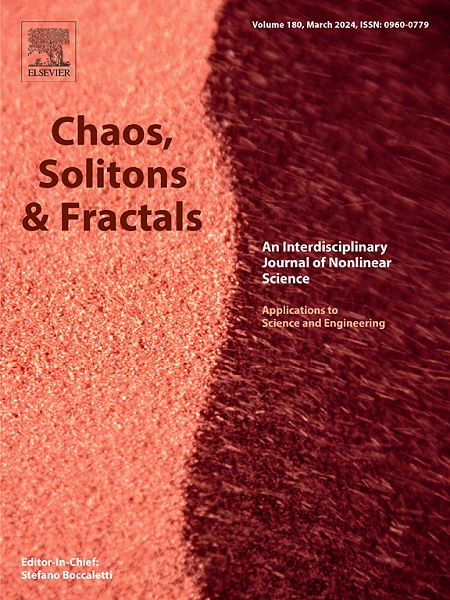Complete threshold dynamics of a reaction–diffusion schistosomiasis model in different time-evolving domains
IF 5.3
1区 数学
Q1 MATHEMATICS, INTERDISCIPLINARY APPLICATIONS
引用次数: 0
Abstract
The significance of river and lake regions in the propagation of schistosomiasis cannot be overlooked, as this disease is transmitted predominantly through water. In this paper, we focus on the complete dynamics of a reaction–diffusion model for schistosomiasis, which accounts for domain that evolve over time. By employing theories of asymptotically autonomous and nonautonomous semiflows, we delineate the global dynamics of the system within domains that are fixed, asymptotically periodic, and bounded, with the dynamics being dictated by the basic reproduction number. Utilizing the sub-and supersolutions method alongside the comparison principle, we substantiate the threshold dynamics of the system in asymptotically unbounded domains. In numerical simulation part, we explore the influence of the evolving domain on the schistosomiasis transmission by comparing the basic reproduction numbers across various domains. Our findings reveal that the asymptotic growth and periodic changes in the size of these areas are pivotal in the transmission of schistosomiasis, with the growth of the regional evolution ratio being particularly conducive to the spread of the disease. These insights suggest that it is imperative for prevention and control authorities to enhance their schistosomiasis countermeasures, especially during the rainy seasons when the risk of transmission is significantly increased.
反应-扩散型血吸虫病模型在不同时间演化域的完全阈值动力学
河流和湖泊地区在血吸虫病传播中的重要性不容忽视,因为这种疾病主要通过水传播。在本文中,我们专注于血吸虫病反应扩散模型的完整动力学,该模型考虑了随时间演变的域。利用渐近自治和非自治半流理论,我们描述了系统在固定、渐近周期和有界域内的整体动力学,动力学由基本再现数决定。利用子解和超解方法结合比较原理,证明了系统在渐近无界域上的阈值动力学。在数值模拟部分,我们通过比较不同区域的基本繁殖数,探讨了进化区域对血吸虫病传播的影响。我们的研究结果表明,这些区域面积的渐近增长和周期性变化在血吸虫病的传播中起着关键作用,区域进化比的增长尤其有利于疾病的传播。这些见解表明,预防和控制当局必须加强其血吸虫病对策,特别是在传播风险显著增加的雨季。
本文章由计算机程序翻译,如有差异,请以英文原文为准。
求助全文
约1分钟内获得全文
求助全文
来源期刊

Chaos Solitons & Fractals
物理-数学跨学科应用
CiteScore
13.20
自引率
10.30%
发文量
1087
审稿时长
9 months
期刊介绍:
Chaos, Solitons & Fractals strives to establish itself as a premier journal in the interdisciplinary realm of Nonlinear Science, Non-equilibrium, and Complex Phenomena. It welcomes submissions covering a broad spectrum of topics within this field, including dynamics, non-equilibrium processes in physics, chemistry, and geophysics, complex matter and networks, mathematical models, computational biology, applications to quantum and mesoscopic phenomena, fluctuations and random processes, self-organization, and social phenomena.
 求助内容:
求助内容: 应助结果提醒方式:
应助结果提醒方式:


